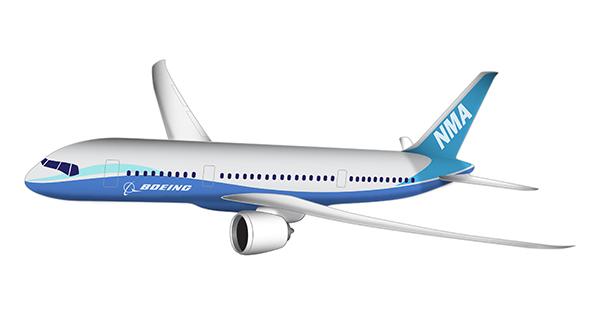
Perhaps the biggest question in the aviation industry today is whether Boeing will create a new jet, specifically a midmarket one. The market clearly wants a new product in this class, and the company clearly needs one to compete against Airbus. But an examination of both the company and the market indicates that time is of the essence.
First, the market. The middle of the market—200-250-seat jets with 4,000-5,000-nm range—is easily the healthiest part of the industry in terms of orders. The orderbook for the Airbus A321neo—4,079 jets—is now the same size as Boeing’s entire MAX orderbook (686 delivered plus 3,405 on backlog, after ASC606 accounting adjustments). Notably, Airbus received 667 A321neo orders in 2020-21, when orders otherwise collapsed, and more than 1,000 in the last three years. While Boeing’s MAX 10 had a few good orders in 2021, the A321neo appears to be ahead of Boeing’s largest single-aisle jet by at least seven to one.
The A321neo is far from perfect for the middle of the market, but many airlines seem to have concluded that this segment is the future and the Airbus jet is the best option available. Boeing needs a more robust response before the A321neo tips what was a duopoly into a 60-40 Airbus victory or even a 65-35 outcome. Given current trends, the A321neo orderbook is likely to top 5,000 by mid-2023.
Second, there is Boeing’s ability to create a new jet and the broader context of workforce trends. Boeing last launched an all-new jet, the 787, in 2004. This 18-year gap is a record in Boeing’s history. Boeing Commercial Airplanes’ (BCA) independent R&D funding fell 30% in 2020 from 2019, and it fell 21% in 2021 from 2020 (see chart). Boeing says this key metric will start to grow again this year.
While engineering headcount did not fall precisely in line with these cuts, it has fallen markedly. Between early 2020 and mid-2021, BCA lost roughly 18% of its engineering and technical workforce, according to Bloomberg, following serious cuts in the previous decade. Here again, Boeing says it is starting to hire engineers; this is another measure to watch in 2022.
When, or if, Boeing does launch a new jet, it will be difficult to restore its engineering staff, thanks to inflationary salary trends. A very strong tech sector is paying very high salaries. SpaceX and other new space ventures are hiring aggressively, as are many well-funded advanced air mobility startups.
The good news for Boeing is that the very same airlines and lessors that are eagerly ordering A321neos—and other financiers—would cheer a new Boeing midmarket jet and provide hundreds of up-front orders. Boeing also has a history of arriving late to a segment with a winning jet, as with the 777 (after the MD-11 and A330/340) and 787 (after the A330-200). With the right jet, Boeing could even recover its lost position as the world’s biggest jetliner company.
Mitigating against a new Boeing airliner is the company’s difficult financial state: It has $16.2 billion in cash but $58.1 billion in debt. There are few doubts about Boeing’s ability to access additional cash through debt or equity, though. And in the broader context, starting a new program with $500 million per year, say, in incremental spending would not make a serious difference to the company’s financial position.
Boeing cites the wasted time and money associated with the new midmarket airplane (NMA), which it pursued before recognizing that a twin-aisle jet would have a hard time competing with a single-aisle. Boeing now regards the NMA experience as a reason to proceed cautiously with new products.
But caution can be a rationalization for inaction. Considering market trends, and the company itself, if Boeing does not begin a new program this year, its ability to launch one will be increasingly constrained. Customers will simply get in line for more A321neos. And Boeing will have a harder time reconstituting the design team needed to create something new.






Comments
The A321neo and A321XLR are maybe great according to airlines CFO but for passengers is really a nightmare.
Flying over the Pond in a 747, 767, 777 or 787 is a pleasant experience compared to do the same in a narrow body jetliner from Airbus.
Don’t forget that the A320 was designed in the early 1980 for one or at most two hours flights. A321 neo and A321XLR are nothing more than extended A320: same narrow fuselage, same low flying speed in which passengers will be kept flying for seven or eight hours.
Offering passengers Airbus single aisle to passengers flying over the Atlantic Ocean is showing disrespect to them.
If Boeing is going to make a big single aisle aircraft rather than a twin aisle could they make sure it lives up to its name has a BIG SINGLE AISLE?
* Sonic Cruiser
* 787
* 737 Max
* KC-46A
* NMA
* 777X
Boeing really cannot afford another project like all the recent ones.